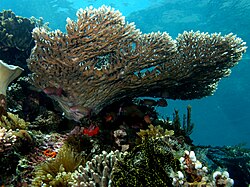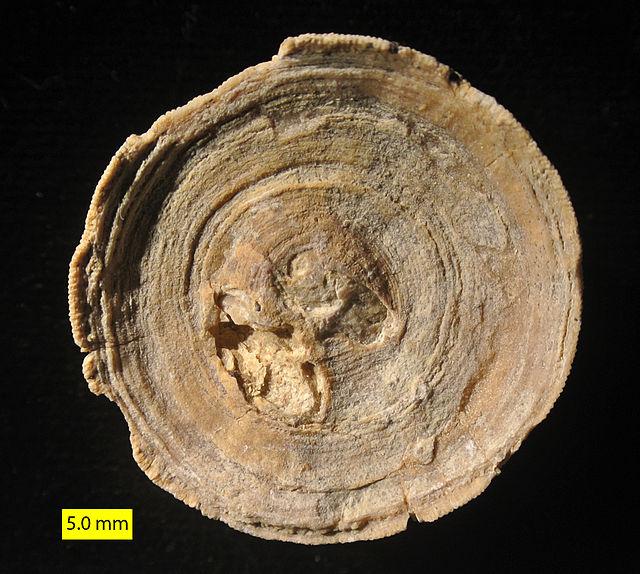Hexacorallia
Class of cnidarians with 6-fold symmetry From Wikipedia, the free encyclopedia
Hexacorallia is a class of Anthozoa comprising approximately 4,300 species of aquatic organisms formed of polyps, generally with 6-fold symmetry. It includes all of the stony corals, most of which are colonial and reef-forming, as well as all sea anemones, and zoanthids, arranged within five extant orders.[2] The hexacorallia are distinguished from another class of Anthozoa, Octocorallia, in having six or fewer axes of symmetry in their body structure; the tentacles are simple and unbranched and normally number more than eight.[3] These organisms are formed of individual soft polyps which in some species live in colonies and can secrete a calcite skeleton. As with all Cnidarians, these organisms have a complex life cycle including a motile planktonic phase and a later characteristic sessile phase. Hexacorallia also include the significant extinct order of rugose corals.
| Hexacorallia Temporal range: | |
|---|---|
 | |
| A stony coral, Acropora latistella | |
| Scientific classification | |
| Domain: | Eukaryota |
| Kingdom: | Animalia |
| Phylum: | Cnidaria |
| Subphylum: | Anthozoa |
| Class: | Hexacorallia Haeckel, 1896 |
| Orders | |


Phylogeny
Hexacorallia is considered to be monophyletic, that is all contained species are descended from a common ancestor, however it has been suggested that many of the current orders are not. Historically, Antipatharia was considered to be in a separate class called Ceriantipatharia, though more recent genetic studies place it in Hexacorallia.[2]
The class includes important coral reef builders such as the stony corals, sea anemones, and zoanthids. The recognized orders are shown below:[4]
- Actiniaria – sea anemones
- Antipatharia – black corals
- Corallimorpharia – corallimorpharians aka "false corals"
- †Rugosa – rugose corals
- Scleractinia – stony corals
- †Tabulata – tabular corals
- Zoantharia – zoanthids
References
External links
Wikiwand - on
Seamless Wikipedia browsing. On steroids.
